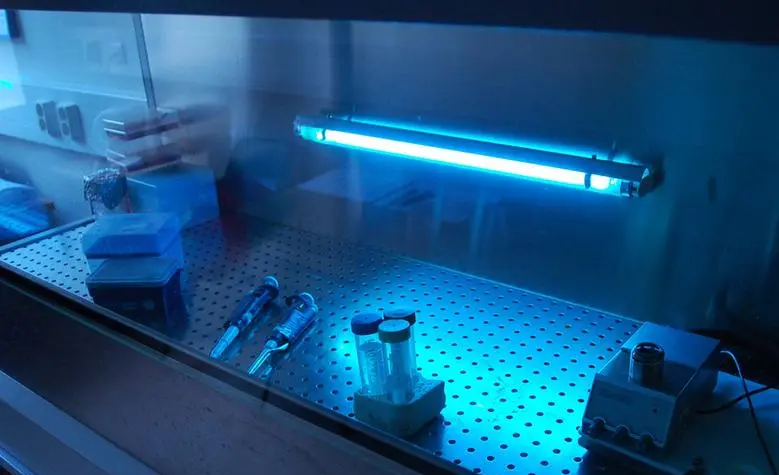Ultraviolet Light Sterilizes Spaces and Disinfects with UVC Light
Ultraviolet light sterilizes spaces. While scientists agree on the importance of COVID-19 infections on the one hand:
-
Due to the droplets that infected people, even if asymptomatic, exhale at short distances and fall to the ground, favoring contagion by air and surfaces;
-
Others indicate that;
-
It is the very small droplets also called aerosols, which disperse more easily and stay longer in the air (type of tobacco smoke), that infect us.
The reality in both cases is that the likelihood of contagion indoors is much higher than outdoors.
That is why we already know that it is recommended:
-
Wash your hands
-
Wear a well-fitting mask
-
Safety distance
-
Clean, sterilize and disinfect the environment and surfaces
-
Ventilate
It seems clear that if the environment in which we find ourselves is clean and disinfected, the risk of contagion is much lower.

That is why it is interesting to find solutions that purify our air. There are different types of solutions, some with special filters and other air suction and filtering systems. On the other hand, UVC ultraviolet light has been used for years to sterilize operating rooms, public transport, and other commonly used facilities. This type of ultraviolet light sterilizes spaces easily and safely disinfects in approximately 30 minutes leaving the spaces free of insects, viruses, bacteria, and fungi without using any chemicals. So it does not only protect against COVID-19 but other viral and parasitic diseases.
Obviously, people or animals should never be exposed to this type of light, it does not serve to disinfect hands or other parts of the body and should always be used following absolutely all safety recommendations. So there can be no living being inside the room while disinfection is being carried out.
Ultraviolet light
It is a light invisible to the human eye discovered with a glass prism with different colors of light to experiment with sunlight. It is the sun that emits ultraviolet light that the Earth's ozone layer absorbs in large part since, otherwise, it would be harmful to us.
Medical uses of this type of light include disinfection and sterilization for many years.
There are three types of ultraviolet light, A, B, and C. The one that interests us for this use is the UV-C:
UV-C, also called UV-GI, an international abbreviation of "Ultraviolet germicidal irradiation": it is used for disinfection and sterilization. The wavelengths we are at are 280 to 100 nanometers. It is almost completely filtered when it passes through the atmosphere and before reaching the Earth's surface.
In industry it is used for "surface curing", so it is used for germicidal applications effectively eliminating viruses and bacteria.
Sterilization and disinfection with ultraviolet light
This type of ultraviolet radiation has been used for many years in ventilation/air conditioning systems and different hospitals here in Spain use it to disinfect the air in the rooms. Also applied to a room or car, it efficiently and quickly kills microorganisms through a physical process. In this way the germicidal wavelength damages them and they will not be able to reproduce or infect again.
The advantages of using light to disinfect with respect to other systems are:
-
Suitable for any space
-
Does not damage surfaces or fabrics
-
It is done in cold
-
You don't need any chemicals
-
It's very fast (30 minutes)
-
It is also used to sterilize water
-
The devices are very simple to use
Portable lamps and projectors with UVC light
Optimal for disinfecting classrooms, public transport, bars or restaurants, since it allows to act safely to carry out the rapid disinfection, in any environment, of rigid or soft surfaces. They are portable, so with a lamp you can disinfect several classrooms or rooms, you will only have to verify that the maximum number of square meters treated at each time is not exceeded. There are also models that combine UVC light with ozone, a gas widely used to disinfect and eliminate bad odors, as it reacts on oxidizable compounds. It is also very important that no person or animal is in the room to be treated.
